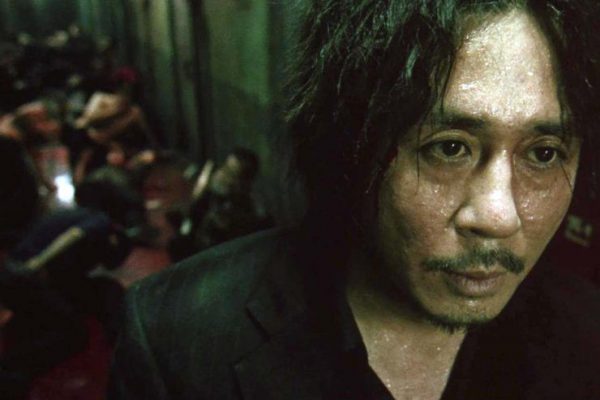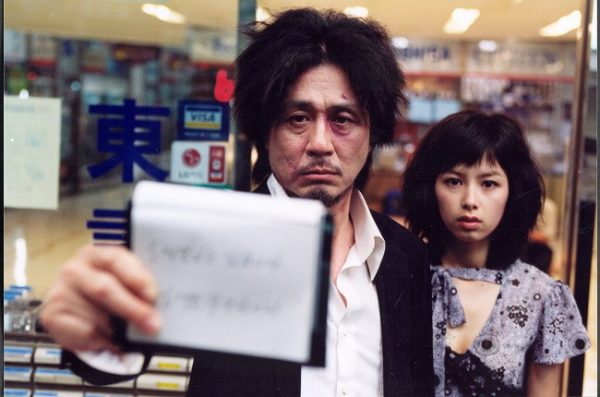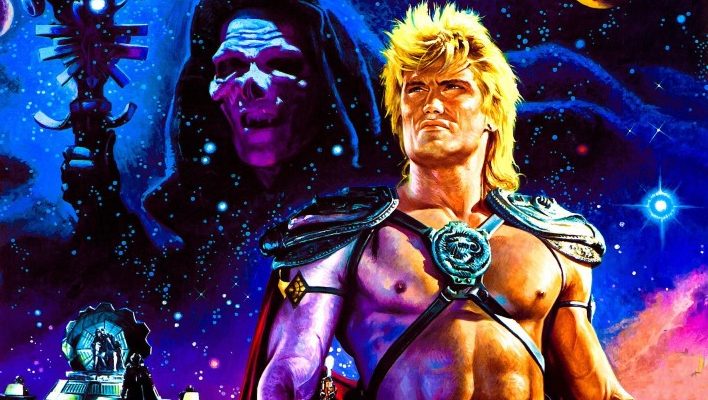Hasitha Fernando revisits Park Chan-wook’s Oldboy as it turns 20…
Park Chan-wook’s Oldboy was a film that seared its indelible images into modern-day pop culture whilst functioning as a major turning point in South Korean cinema. It gained widespread attention in the US and almost won the Palme d’Or at the Cannes Film Festival in 2004, garnering high praise from the likes of filmmaker Quentin Tarantino and film critic Roger Ebert. An influential cult-classic unlike any other, this is the behind-the-scenes story of that unforgettable cult-classic.
From the pages of a manga to the big screen
Before Oldboy made a splash at the 2004 Cannes Film Festival, its life began in the pages of a Japanese manga. The narrative which was serialized in the Futabasha magazine Weekly Manga Action from 1996 to 1998 magazine, written by Garon Tsuchiya and illustrated by Nobuaki Minegishi follows the protagonist Shinichi Gotō, a man who, after a decade of incarceration in a private prison, is suddenly set free. Following his release, Gotō goes to desperate lengths to find and punish his captors in an effort to discover the reason for his confinement.
During the process of adapting from the source material filmmaker Park Chan-wook and his co-writers Hwang Jo-yun and Lim Jung-hyung mostly stuck to the basic premise of the manga, faithfully reproducing its lurid aesthetic and mind melding circumstances, whilst adding their own brand of twisted creativity. To put it bluntly, Park’s adaptation was more of a visceral, blood-soaked revenge flick while Tsuchiya’s effort was more of a slow-burn, neo-noir whodunnit.
The director wanted to make an unforgettable experience for audiences
From the get-go Park wanted to test his audiences’ level of tolerance with Oldboy, elaborating in a public event held in Seoul shortly after the film’s release in Korea back in 2003, “I said from the start, I wanted the film to be felt physically, not just emotionally. I wanted the audience to be tired when they finished the film. I wanted their bodies to be tired.” He also poked fun at the unhealthy viewing trends of modern audiences exclaiming, “I don’t know how people can find any fun in watching mindless cinema. If you want a peaceful rest, have a bath. Why you go to the cinema?” Whether you love the guy or not, the talented creative does bring up an interesting point.
Oldboy’s infamous twists came quite randomly
Oldboy is a movie that has gained a level of notoriety that very little films have been able to achieve, and this can entirely be attributed to the multiple WTF moments that have been crammed into its 2-hour runtime. But there are two, in particular, that take the proverbial cake in terms of WTF-ness and this double whammy of craziness takes place during the nerve-wracking climax of the film. This duet of twists came to Park’s mind whilst taking a bathroom break from a coffee-fueled brainstorming session with producer Syd Lim and his co-writers.
For weeks they were struggling to come up with a secret that’d be so extreme in its nature and one that justified the villain’s intricately planned revenge plot – and suddenly everything fell into place during Park’s visit to the restroom on one fateful day. The filmmaker elaborated, “Why not nine years or thirty years? That’s when I thought of the character of Dae-su’s daughter, and how 15 years would be about the amount of time necessary for her to mature into an adult. So as soon as I returned from the restroom, I told my producer everything in a rush and that was how the whole story was decided.”
Arguments regarding the film’s production budget were commonplace
The making of Oldboy was no walk in the park for all involved and as with any other demanding movie production there was quite a bit of disagreements on set vis a vis the production budget. These creative differences further escalated when the shoot, that was originally scheduled to last 48 days, quickly ballooned to 72 and along with it its budget which eventually became a whopping 3.2 billion won (about $ 3 million).
Lim looked back at this tumultuous creative process during a Q & A session of Old Days – a documentary based on Oldboy – saying, “We fought a lot, but it wasn’t personal or emotional. The director will always want to spend more money, while the producer will always want to save as much as possible; it’s an age-old issue that will never be solved.” Park added to Lim’s statement saying, “Arguing, however, allows for growth. We work together in a way that’s far from boring, in an environment that is full of tension as we contribute new ideas that can clash at times.”
Choi Min-sik’s casting was inspired by the manga
Despite taking many creative liberties with the source material there was one instance where the manga provided some damning bit of inspiration to Park & co. One day while glancing through the pages of the comic Lim happened across a full-page illustration of the main character and immediately saw the uncanny resemblance it had to South Korean actor Choi Min-sik.
Starting his professional career as a theatre actor in the early 80s Choi got his first big break for his stint on the 1994 television drama The Moon of Seoul. The show struck a chord with audiences of the era and was quickly labelled as a “masterpiece” of contemporary Korean TV shows. Choi’s break into the international arena, however, came with his brilliantly compelling performance in 2003’s Oldboy.
Yoo Ji-tei was a strange choice as the movie’s villain
The casting of fresh faced Yoo Ji-tei as the film’s antagonist was a peculiar move to say the least. The actor was 28 years old while Choi was already in his early forties. So, what’s the logic behind casting Yoo when in the story both the characters were supposed to be contemporaries of the same age?
For one Park wanted to highlight how Choi’s Oh Dae-soo has been affected physically and emotionally by his 15-year solitary confinement. In Yoo’s case it was the exact opposite, as Park sought someone whose “mental growth has stopped due to power and affluence” and these attributes could be better portrayed by a younger actor like Yoo. All this makes more sense when we, as audience members, watch Oldboy and see the story unfold.
The shoot was heavily storyboarded beforehand
Although the production budget ended up ballooning in the end, Oldboy was heavily storyboarded beforehand prior to commencement of the shoot. The original source material too probably influenced some of these visual cues, but knowing Park’s out-of-the-box thinking pattern most of the storyboards were undoubtedly his and his team’s sole effort.
Oldboy cinematographer Chung Chung-hoon, who made his US debut with Park’s English-language debut Stoker in 2013, spoke briefly regarding what transpired behind-the-scenes, “Of course, everything was carefully storyboarded in advance, but on set, the movement and speed would change, even within the same cut, according to the performance that was happening in front of me.” Since his US debut Chung has become one of the most in-demand cinematographers in the industry, lensing the likes of Last Night in Soho, Unchartered and most recently the Disney+ mini-series Obi-Wan Kenobi.
Choi Min-sik went full method for his role
We’ve seen countless Hollywood actors going full method for the roles they get cast in. Daniel Day Lewis, Robert De Niro, Christian Bale and Joaquin Phoenix are just a few examples of performers being so committed to their roles they end up being consumed by them – at times blurring the line between reality and fiction. South Korean star Choi Min-sik also followed suit, diving into his character so deeply that even between takes he remained in character as Oh Dae-su and even ad-libbed his dialogue on the spot during the most emotionally excruciating scenes.
One sequence in particular, which involved the consumption of a live octopus involved the actor chomping on four live specimens, squirming tentacles and all, to achieve the shot. This was done on Choi’s suggestion, despite him being a Buddhist and a vegetarian, to better demonstrate the corrosive effect the 15-year imprisonment had on Dae-su’s mind.
The iconic corridor fight scene was something of a metaphor
The corridor fight sequence was undoubtedly one of the most iconic moments featured in Oldboy. Since its release this utterly breathtaking single-take battle scene has inspired many TV show and film producers to replicate its magic but of course, nothing quite beats the original, blood-soaked, hard-knuckled version featured in this film. In an interview with Variety this year Park revealed that he and his team shot 15 takes of the Oldboy fight, and “there isn’t a take where everything is perfect.” But it’s these imperfect moments and rough-edged quality that lends an air of realism to the proceedings.
Park even went further by describing the violent hallway altercation as something of a metaphor for the many obstacles that threaten one’s life. In a conversation with Inverse, he detailed what he meant by that, “So if we call one man’s life a battle, this battle-istic attitude, uh, there’s things in life that fight with us, like an illness or anything in life that threatens us, or for instance, an internal conflict. Well, I almost saw the scene as a materialization of those things that fight with us and torture us in life. And the fatigue and loneliness that comes from this lifelong battle, with these things that torture us. I saw it as a metaphor in that way.”
The birth of a cult-classic crime thriller and a trendsetting Korean film
To say Oldboy acted as the doorway for wider audiences to appreciate Korean cinema is something of an understatement. Although Bong Joon-ho’s atmospheric crime drama Memories of Murder headlined by Song Kang-ho also debuted back in 2003, it was Park’s effort that garnered the attention of both local and international audiences. In South Korea the film was seen by 3,260,000 filmgoers and ended up being the 5th highest grossing movie of that year. When it came to the worldwide box-office Oldboy ended up raking in a more than decent $17.1 million, on a production budget of around $3 million.
The movie was squeezed in to the 2004 Cannes Film Festival at the last moment and ended up being nominated for the coveted Palme d’Or (which ultimately went to Michael Moore’s Fahrenheit 9/11). But the flick didn’t come home empty handed, instead the flick bagged the second most prestigious prize of the famed event – the Grand Prix. This wasn’t just a win for Park but also a watershed moment for South Korean cinema as a whole. And the culmination of this achievement would take place 16 years later, when Bong Joon-ho’s Parasite walked away with the Oscar for Best Film and Best Director at the 92nd Academy Awards.
Quentin Tarantino, who served as the head of the Cannes jury that year, became such a die-hard fan of the film that he attended nearly all the Oldboy screenings held in Cannes showering glowing praise on the effort. But Tarantino wasn’t the only creative impressed with what Park had accomplished, acclaimed film critic Roger Ebert gave the movie a rare four out of four stars remarking, “We are so accustomed to ‘thrillers’ that exist only as machines for creating diversion that it’s a shock to find a movie in which the action, however violent, makes a statement and has a purpose.”
And that statement pretty sums up Park’s seminal achievement; in that every moment featured in the movie no matter how revulsive, violent and shocking was included by design and with measured purpose to give the viewer the most visceral cinematic experience they’ve ever encountered.
What are your thoughts on Oldboy? Let us know on our social channels @FlickeringMyth…
Hasitha Fernando is a part-time medical practitioner and full-time cinephile. Follow him on Twitter via @DoctorCinephile for regular updates on the world of entertainment.






















